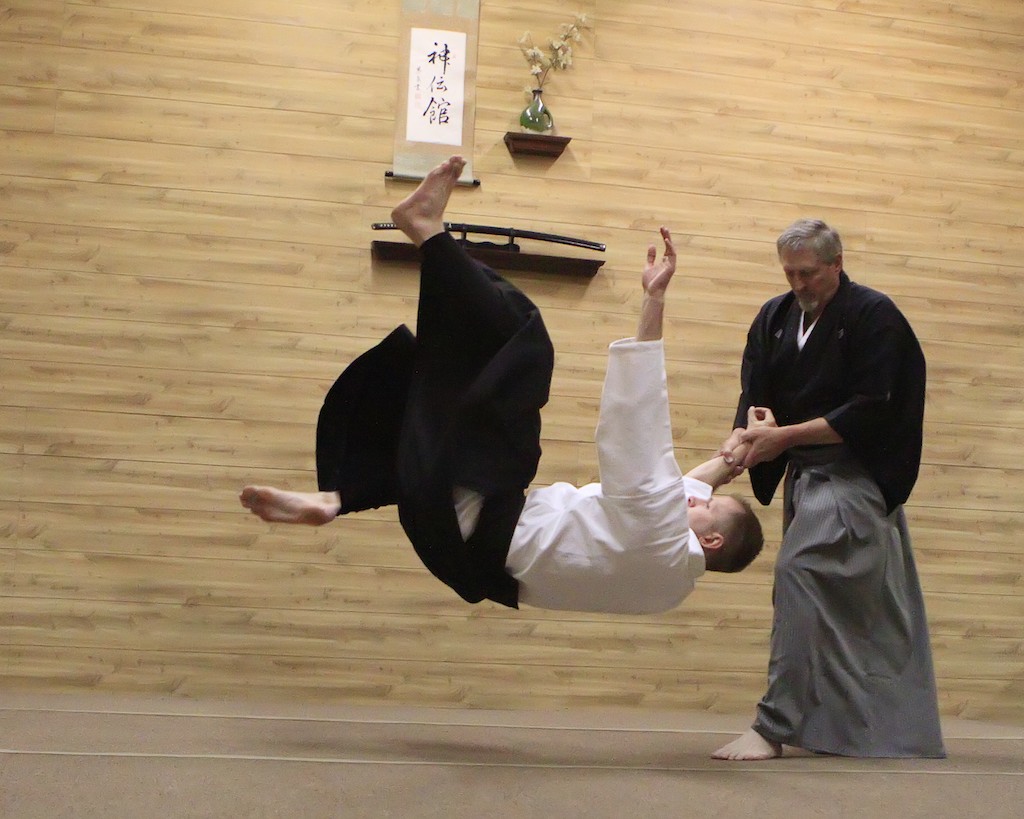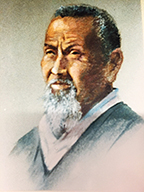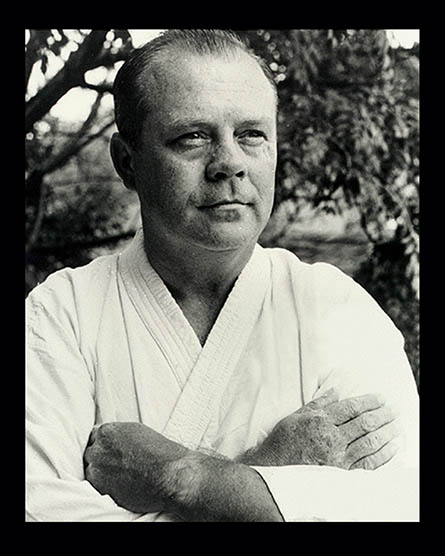 |
Shorinji Tekken Ryu
was formally renamed as Nippon Kobudo Kamishin Ryu in the Kanagawa prefecture of Japan in 1968 by Albert C. Church with sponsorship by Shogo Kuniba, Head Family, 3rd lineage generation successor of Motobu-ha Shitoryu.
See scroll
of "sponsorship".
Note:
The Japanese kanji for the system name would
read as follows:
Shorinji / Tetsu / Ken Ryu
When written or spoken as one name,
TetsuKen becomes TekKen respectively.
|
Albert C. Church, Jr.
Nippon Kobudo Kamishin Ryu
Head Family
1930-1980 |
Shorinji Tekken Ryu's Modern Heritage
During the period from 1967 to 1969, Albert C. Church traveled to and lived in Japan at the request of his instructor, Kim ji-koh, Shorinji Tekken Ryu, (Japanese pronunciation of the Korean name), Head Family. Late in 1967 Church sensei was named the art's successor of Shorinji Tekken Ryu and received the Soden, scroll of transmission.
Shorinji Tekken Ryu
Master Kim ji-koh
Shorinji Tekken Ryu
Head Family
1881-1967
In Korea this art was known as "Sorimsa Cheol Gwonbeop", (Young Forest Temple, Iron Fist Method). The Cheol Gwonbeop system absorbed the Five Commandments (moral codes), known as "Sesok Ogye", authored by the monk Won'gwang Popsa. These commandments are often associated with the Hwarang warriors. Chinese hand forms were blended with the Korean Taekkyeon forms creating a strong system of self-defense.
The armies of Japan occupied Korea, in the late 1880's, bringing with them the art of jujutsu, which was later used by Master Kim to enhance this style.
In 1950, as a member of the 1st Provisional Marine Brigade, stationed in Korea, Albert Curtis Church, Jr., began studying Sorimsa Cheol Gwonbeop under the current Head Family (at that time), Master Kim ji-koh.
Church sensei was rotated stateside in 1952 where upon he began teaching Master Kim's art.
The style moved to Japan, Mishima-shi, Shizuoka-ken, in 1956, when Kim sought medical treatment which was not available in the battle torn Korean nation. In the Japanese language, the system was then called Shorinji Tekken Ryu.
In May, 1967, Kim called for Church sensei to study with him in Japan. Late in 1967 Church sensei was named the art's successor and upon Kim's death, received the soden, scroll of transmission and became the next lineage Head Family of Shorinji Tekken Ryu, and related arts.
Kamishin Ryu
While living and training in Japan, Church sensei became close friends with Shogo Kuniba, Soke (by succession), of Ryukyu Karate-do Motobu-ha, Nippon Karate-do Shito Ryu. Kuniba sensei sponsored Church sensei before the Zen Nippon Kodudo Renmei and Zen Nippon Karate-do Renmei of Kyoto and Osaka after reviewing the Shorinji Tekken Ryu Soden that Church sensei received. It was decided at that time that the art of Shorinji Tekken Ryu should be renamed as Nippon Kobudo Kamishin Ryu. Therefore the newly founded name of this art was officially released in Japan in 1968.
A special scroll was prepared by Kuniba sensei and presented to Church sensei, in Japan, in 1968.
Please note: The "Kuniba scroll" was translated by Guy Power, Renshi seventh dan, Toyama Ryu/Nakamura Ryu Batto-Do (founded by Nakamura Taizaburo, Hanshi tenth dan Toyama Ryu Iaido). Guy Power is the USA representative of the International Batto-do Federation.
Click to view the scroll.
In 1969, prior to Church sensei's return to the United States, Kuniba sensei presented Church sensei with a kanban, (formal teaching authorization sign).
Certification Rankings of Church sensei
Shihan, Motobu-ha Shitoryu Seishinkai
Hayashi Teruo
Godan, Motobu-ha Shito Ryu
Kuniba Shogo and Hayashi Teruo
Shihan, Judo-Jujutsu, Seishinkan Sogo Budo Renmei
Kuniba Shogo
Sandan, Iaido, Seishinkan Sogo Budo Renmei
Kuniba Shogo
Member, Board of Director for the Nippon Katatedo Seishinkai,
Zen Nippon Karatedo Renmei and the Nippon Karatedo Rengokai
Hayashi Teruo and Kuniba Shogo
Seishinkai Representative
Appointment as the Kanto Area Karatedo Honbu for the Seishinkai
Hayashi Teruo and Kuniba Shogo
Sandan, Hakkoryu
Ryuho Okuyama
After receiving the authorization and support of Shogo Kuniba, Church sensei returned to the United States to teach the newly renamed art of Nippon Kobudo Kamishin Ryu. It was Church sensei's goal for his students to train within the teachings of Japanese budo.
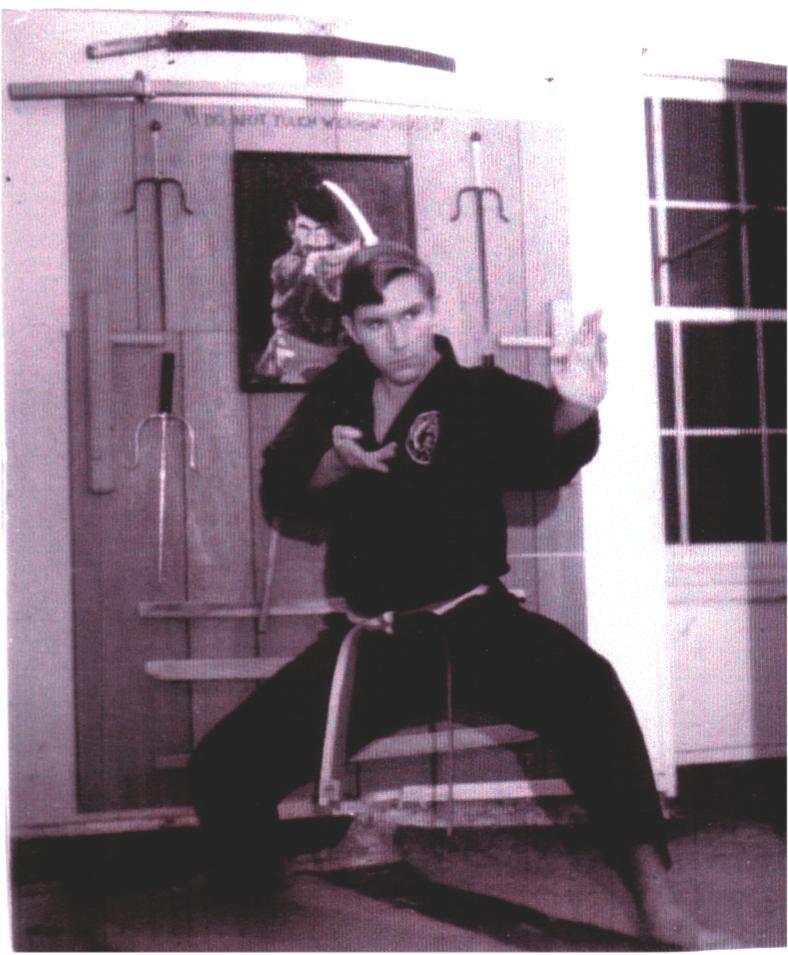 |
When Church sensei returned stateside, this time as Shorinji Tekken Ryu/Kamishin Ryu's new head family, the system's hierarchical structure began taking shape. Church sensei named Robert Kelly, his future son-in-law, as the system inheritor and as a soke-dairi at that time. Kelly sensei received a document of lineage transmission in 1971.
|
Robert Kelly
Shorinji Tekken Ryu/Nippon Kobudo Kamishin Ryu
|
The organization Church sensei began shaping eventually flourished with over 7,000 registered students. Then in the mid 1970's time frame after a series of events, the organizational structure began to falter. When the dust settled, events found the hombu (headquarters school) dojo closing, and much of the top-level structure in confusion. Church sensei had literally become inaccessible and was not seen for approximately one year. During this time, a number of top-level students stepped away from the art. However, once Church sensei was back on the scene and the hombu re-opened, the residual effects from the confusion that started in the mid 1970's never seemed to disappear.
Then unexpectedly in 1980, Church sensei died.
Petit sensei began his training with Church sensei in 1971, first training under one of
his black belt instructors then eventually under him and Kelly sensei directly. It
was Church sensei's goal for his students to train within a combined martial structure,
therefore, Petit sensei earned separate black belt rankings under
the Shorinji Tekken Ryu/Kamishin Ryu system. By 1979 Petit sensei moved to
Texas. In 1980, he received a late night phone call from Robert and Linda Kelly
informing him of Church sensei's death (Linda Kelly is Church sensei's oldest daughter).
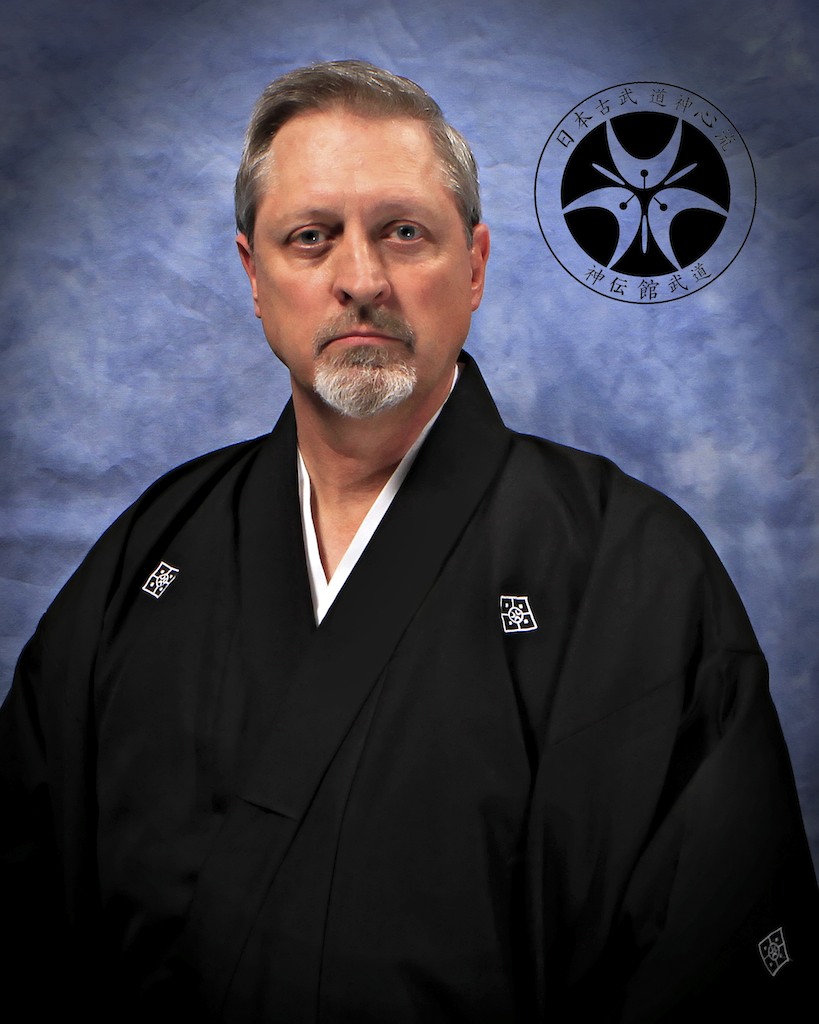 |
Robert Kelly, for personal reasons, has chosen not to publicly teach the art that he inherited from Church sensei. In late 1995, Robert Kelly signed and sealed a letter of "lineage transmission" giving Petit sensei full sponsorship, permission and backing to carry on the Shorinji Tekken Ryu lineage teaching as Head Family. |
Ted Petit
Shorinji Tekken Ryu
Shindenkan Budo Renmei
Head Family |
The Shindenkan
Shindenkan Budo Renmei, was organized in the year 2000 to promote the art of Shorinji Tekken Ryu/Nippon Kobudo Kamishin Ryu.
Kamishin Ryu's teachings are jujutsu in nature and consist of a cohesive blend of Japanese based martial arts. The art emphasize's the control, joint locChing, chocChing, throws and fluidity of jujutsu with effective atemiwaza.
Atemiwaza requires that the student develop proper body mechanics to establish an effective "delivery system". Once this foundation is developed, the student extends the body mechanics into wider spheres of principle based application. These spheres of application require that the student learn the principles behind what makes technique work, therefore, mere emulation of physical technique will not allow the student to become an effective martial artist.
A few of this system's principles are briefly listed below...
these principals are not listed in any particular order:
...rotational escape
-teaches the foundation of mechanical leveraging.
...to/from
-always draw to and proceed from...points of strength.
...duality
-keep in/yo active within everything.
...decaying power
-channeling aiChi flow.
-dissipate power naturally, not abruptly.
...ebb and flow of power
-projecting/redirecting
...in/yo-no-kamae
-the dual nature of postures.
Kamishin Ryu traces part of its modern heritage back through Church sensei's association with Okuyama sensei, Hakko Ryu Head Family. Hakko Ryu as a traditional martial art has direct lineage influences from Daito Ryu. It combines the grappling sChills of ancient Japan, with striChing nerve/meridians within the body. While living in Japan in the late 1960's, Church sensei trained at the Hakko Ryu hombu dojo with Okuyama sensei. The Kamishin website includes archival photography during this time frame.
Within Japan, jujutsu is the largest traditional soft style martial art today. Jujutsu uses principles of countering an attack by using the opponent's strength against himself. StriChing techniques (atemiwaza) based on pressure points, are used along with joint manipulations and throws to subdue and control an opponent. The fundamentals of jujutsu are very simple to learn and truly is a martial art for all ages. On the other hand, the advanced methods of jujutsu take years of dedicated study.
The Head Family Today
Petit sensei continually seeks to advance his budo training and knowledge.
Petit sensei began sword training in 1973. At that time the training methods taught to him were based on the Mugai Ryu Iai system, as taught to Church sensei by Shogo Kuniba. Since Church sensei's death, in 1980, Petit sensei maintained and passed on these foundation teachings to his students.
Petit sensei has trained with Guy Power, Renshi seventh dan, Toyama Ryu/
Nakamura Ryu Batto-Do (founded by Nakamura Taizaburo, Hanshi tenth dan Toyama Ryu Iaido). Guy Power was the USA representative of the International Batto-do Federation. Power sensei was introduced to Iaido (Mugai Ryu) by Church sensei from 1970-1972.
Petit sensei began training in the art of Omote Senke Chanoyu (the art of tea) under Ayako Minomo Sacks, shihan, in 2000. The tea ceremony is a unique expression of Japanese culture that elevates the taChing of tea to an art form. A variety of refined objects is employed within the tea ceremony which includes: kettles, tea containers, tea scoops, tea bowls, tea whisks, hanging scrolls, water containers and flower vases. The harmonious arrangement and graceful use of these objects are at the heart of the tea ceremony, for this is what shows the host's appreciation for tea and feeling for beauty.
